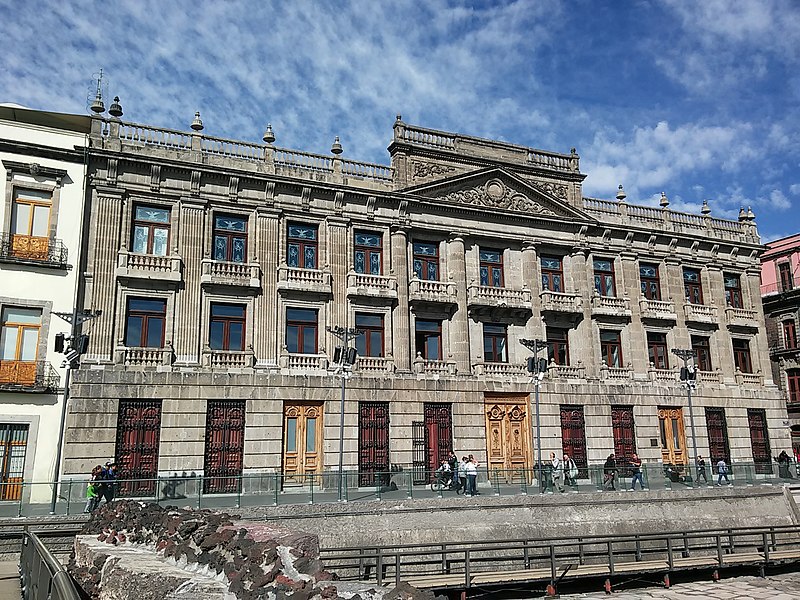
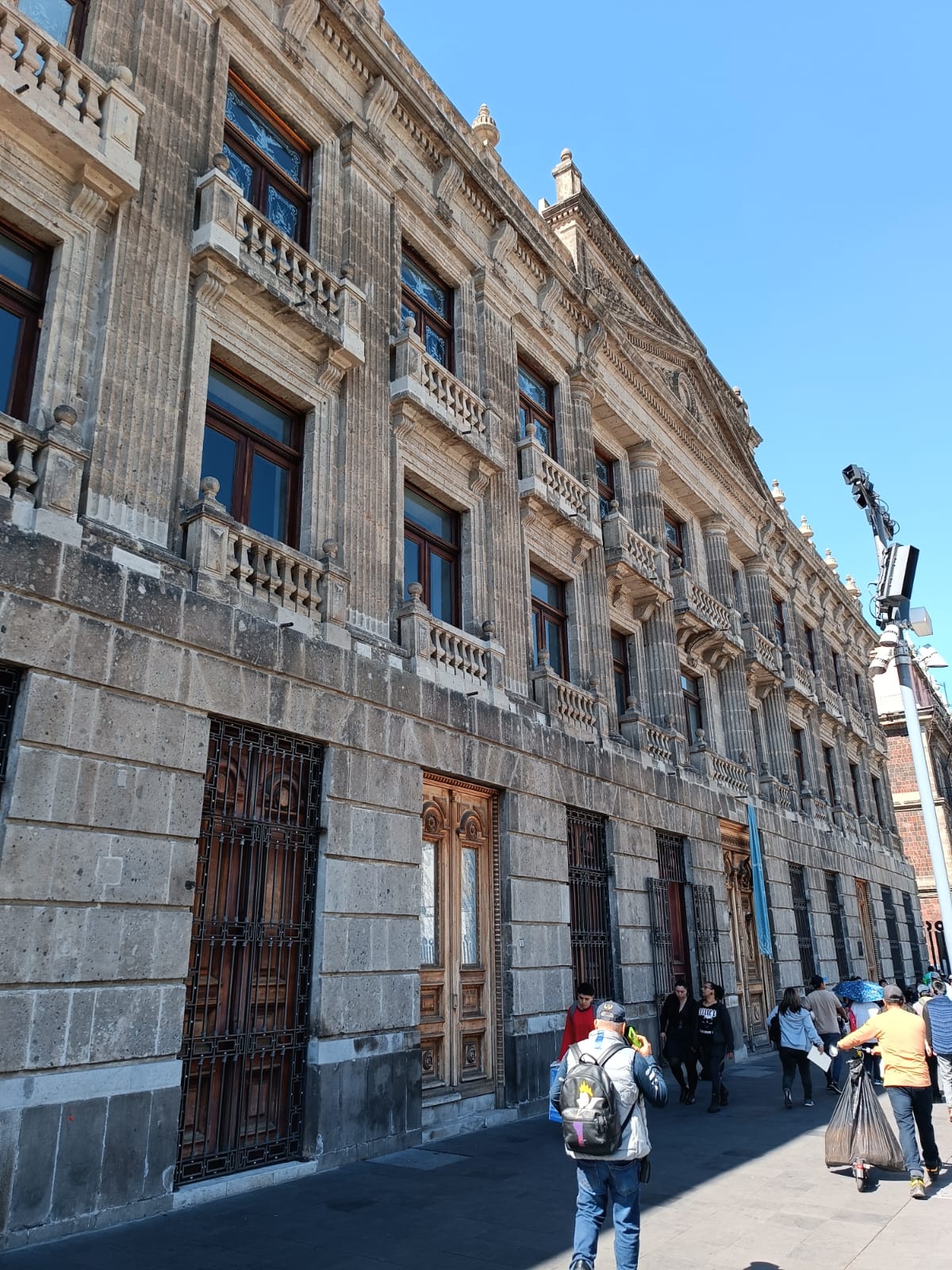
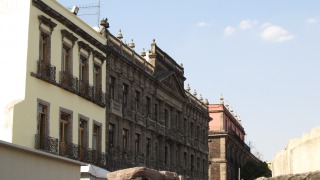
Photo credit: YoelResidente on Wikimedia Commons
The Palace of the Marquis of Apartado is the ten-year work (1795-1805) of Manuel Tolsá. One of the greatest works of the late 18th century, todaythe massive palaces faces the Templo Mayor site which was excavated only in the 1980s. On the corner of Calle de Donceles and República de Argentina, it is probably one of Tolsá’s least-known but most successful works, and one which still inspires today.
A work of strident NeoClassicism, the building has two facades on their respective streets, and three levels. Both facades are clad in great quarried stone.
In 2005, the building came under the control of the National Institute of Anthropology and History (INAH) who still occupy the building today. Multiple artifacts related to the Templo Mayor have been found inside and underneath the building. A haunting altarpiece of the Cuauhxicalli Eagle was discovered there in 1985 and is today in the INAH collection.
 Loreto-San Ildefonso Route
Francisco Fagoaga y Arozqueta inherited the position of "Apartador General de la Nueva España" from his father. The Apartador de Oro y Plata was an industrial establishment which took ore from the mines to be ground and melted. After melting and separating gold from the silver, the metals were returned to the owners who took them to the mint for coinage. Fagoaga inherited from his mother, Doña María Josefa Arozqueta de las Heras Alcocer, a mercantile house for imports and exports. In 1772, Fagoaga took up the title of Marquis of Apartado from King Charles III and then entrusted the Master of Architecture of the Academy of San Carlos, Don Manuel Tolsá, with the construction of his palace just a few blocks from the Plaza Mayor. This was in about 1796.
Over time, the building was modified for the offices of the Ministry of Justice and Public Instruction and for others. Archaeological excavations later uncovered the staircase of the Coateocalli, the House of the Serpent. These discoveries were made by Leopoldo Batres during the first excavations in 1901. This space was reserved, archaeologists suspect, as a house for the gods of the lands conquered by the ancient Tenochca people, as war trophies.
Loreto-San Ildefonso Route
Francisco Fagoaga y Arozqueta inherited the position of "Apartador General de la Nueva España" from his father. The Apartador de Oro y Plata was an industrial establishment which took ore from the mines to be ground and melted. After melting and separating gold from the silver, the metals were returned to the owners who took them to the mint for coinage. Fagoaga inherited from his mother, Doña María Josefa Arozqueta de las Heras Alcocer, a mercantile house for imports and exports. In 1772, Fagoaga took up the title of Marquis of Apartado from King Charles III and then entrusted the Master of Architecture of the Academy of San Carlos, Don Manuel Tolsá, with the construction of his palace just a few blocks from the Plaza Mayor. This was in about 1796.
Over time, the building was modified for the offices of the Ministry of Justice and Public Instruction and for others. Archaeological excavations later uncovered the staircase of the Coateocalli, the House of the Serpent. These discoveries were made by Leopoldo Batres during the first excavations in 1901. This space was reserved, archaeologists suspect, as a house for the gods of the lands conquered by the ancient Tenochca people, as war trophies.
Heart of Mexico Walking Route: Loreto-San Ildefonso Route
< < Colegio de San Ildefonso | Antiguo Colegio de Cristo > >
Ancient Mexico Route: The Marquis de Apartado, Don Francisco de Fagoaga y Arozqueta, commissioned the Master of Architecture of the Academy of San Carlos, Manuel Tolsá, to build this palace a few blocks from the Plaza Mayor in about 1796. Over time, the building was modified for the offices of the Ministry of Justice and Public Instruction among others. Archaeological excavations later uncovered the staircase of the Coateocalli, the House of the Serpent. Leopoldo Batres made the first excavations in 1901. The space was reserved, archaeologists suspect, to house the "gods" of the lands conquered by the Tenochcas, as war trophies. This archaeological window tells the story of urban archaeology in ancient Mexico City and allows us to admire the interior of the Palacio del Apartado.Heart of Mexico Route: Ancient Route
< < Pino Suárez / Ehécatl | | The great Tzompantli > >
Proyecto “Corredor de Cultura Digital”. Nombre de la investigación: Investigación Centro Histórico, Monumentos, Edificios y Puntos de Interés (2023)
Dirección de investigación y diseño de Rutas: Acércate al Centro A.C. Guadalupe Gómez Collada
Coordinación e investigación histórica: Fideicomiso del Centro histórico Dir. Maestra Loredana Montes
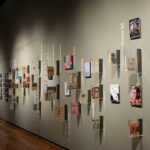
Nearest at 0.05 kms.

Nearest at 0.05 kms.
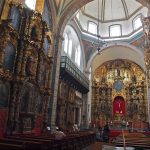
Nearest at 0.06 kms.

Mexico City's historic and first-recognized Jewish temple . . .

A modern graphic collection in an outstanding Baroque palace from the 18th century.
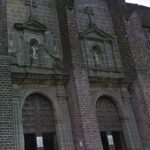
A striking Baroque work by Pedro de Arrieta stands the test of time.
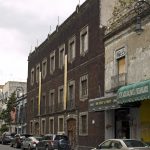
One of Mexico City's earliest temples is today a cultural center and museum.
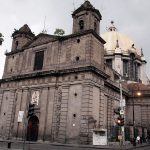
One of the most striking Neoclassical churches in the city center, the Church of Nuestra Señora de Loreto is also one of the most crooked.